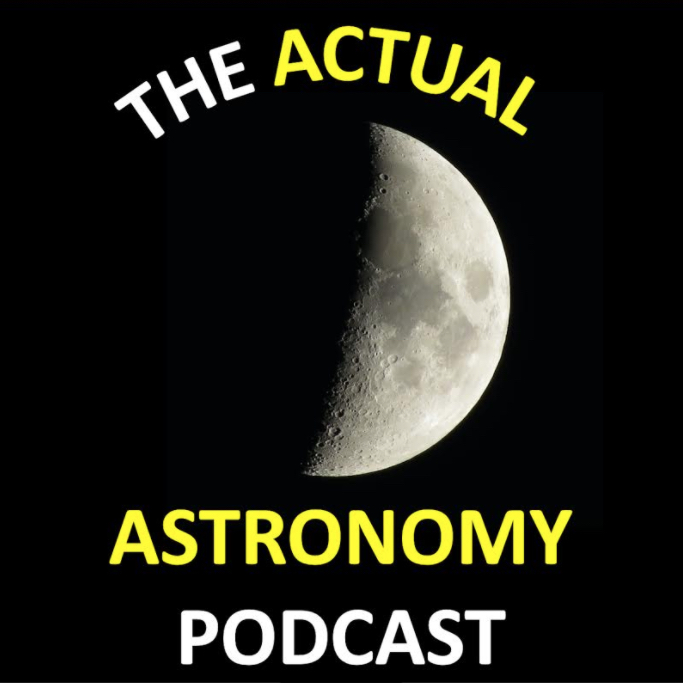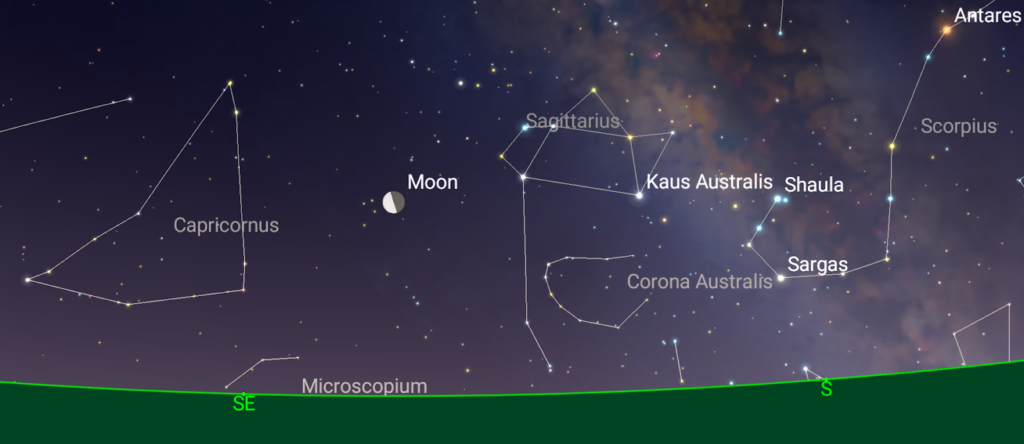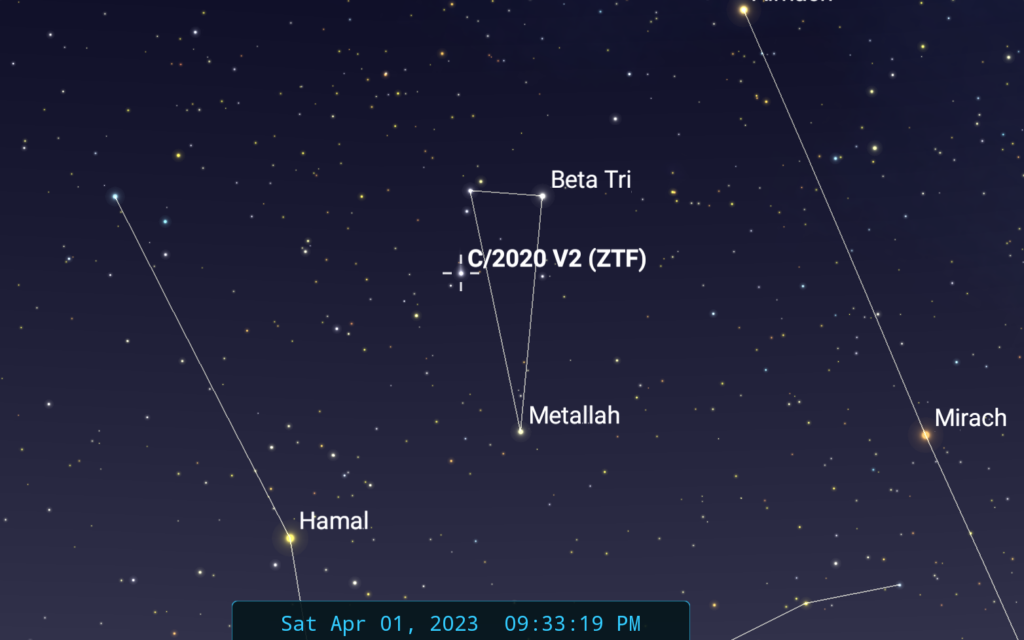Podcaster: Shane and Chris

Title: Objects to Observe in the April 2023 Night Sky
Organization: Actual Astronomy
Link : https://actualastronomy.podbean.com/
Description: The Actual Astronomy Podcast presents Objects to Observe in the April 2023 Night Sky. In this episode we’ll talk about how to find and observe Mercury during its best evening elongation for 2023 this April. We then go over some of the pairings of the Moon and planets before concluding with Venus and some observing hints to begin seeing what it might reveal on its way to its own evening elongation this spring.
Bio: Shane and Chris are amateur astronomers who enjoy teaching astronomy classes and performing outreach where they help the eyes of the public to telescope eyepieces.
Today’s sponsor: Big thanks to our Patreon supporters this month: Rob Leeson, David Bowes, Brett Duane, Benett Bolek, Mary Ann, Frank Frankovic, Michael Freedman, Kim Hay, Steven Emert, Frank Tippin, Rani Bush, Jako Danar, Joseph J. Biernat, Nik Whitehead, Michael W, Cherry Wood, Steve Nerlich, Steven Kluth, James K Wood, Katrina Ince, Phyllis Foster, Don Swartwout, Barbara Geier, Steven Jansen, Donald Immerwahr
Please consider sponsoring a day or two. Just click on the “Donate” button on the lower left side of this webpage, or contact us at signup@365daysofastronomy.org.
Please visit our Patreon page: https://www.patreon.com/365DaysOfAstronomy
or you can consider to sponsor a day of our podcast : https://cosmoquest.org/x/365daysofastronomy/product/sponsor-an-episode-of-365-days-of-astronomy/
Transcript:
Intro: Objects to Observe in the April 2023 Night Sky on Episode 315 of the Actual Astronomy podcast. I’m Chris and joining me is Shane. We are amateur astronomers who love going out under the night sky and this podcast is for anyone who enjoys being out under the stars. This month we’ll talk about how to see Mercury and Venus and an interesting Asterism.
How was your week Shane?
Get any observing in?
I had a good view of Venus and its clouds, our Moon and Uranus too … all just from my driveway as driving around on the frozen mud of the backroads isn’t going to work well right now.
April 1st to the ~21st – Mercury at one of its best evening apparitions reaching greatest elongation (19-degrees from the Sun) on April 11th .
Around April 1st it should become easily visible about 30 minutes after sunset.
Look due west for a bright, -1, orangish flickering star dancing in the twilight glow. It’s in Pisces but you won’t see much of that dim constellation in the bright evening sky.
Just seeing Mercury can be a challenge enough and binoculars will not show any significant detail. Telescopes can show its phase if the atmosphere is steady and if the evening is particularly clear and stable you might make out some ill-defined markings on the planet.
April 1 you’ll see a bright -1 gibbous phase, April 11th 0 magnitude Mercury will appear as a slightly less than a quarter phase and by the 21st a thin crescent glowing at magnitude 2.3 will be tough to pick out in the evening twilight. Note Mercury grows in size as it approaches inferior conjunction on May 1 with the Sun meaning it is passing between us and the Sun although will not transit the Solar Disk. Contrast Booster or an orange filter might help. Use medium high power.



April 6th Full Moon in Virgo directly beside Spica
Finally the Full Moon is dropping lower meaning we should be getting into warmer weather observing.
I was reading that within ~24hrs of Full Moon the Moon is something like 40% brighter!

April 11th – Venus & Pleiades in Conjunction

April 13th – Best night to see the Gegenschein – faint bright spot overhead opposite the sun. also; Last Quarter Moon sits between Sagittarius and Capricorn

For us the Moon this night is just West (Right) of the Terebellum Asterism which rests on the Sagittarius Capricorn border. However this is made somewhat confusing as Omega also has the proper name Terebellum. A grouping of stars which forms a diamond, cross or quadrangle and comprises Omega Satitarrii at the top, and the Flamsteed numbers stars 59&60 as the outer parts and 62 as the point. Recognizing a grouping since antiquity I’ve also read of this as being called Ptolemey’s Quadrangle as well as the “Boring Tool”.
While not overly bright, these stars are all ~4.5 magnitude, it is the absence of bright stars in this region that makes the pattern pop out on our horizon. In the Chinese language the region is referred to as the Dog Territory.
April 16th – Saturn 3-degrees north of the Moon in the morning sky for those in Europe, farther for us Shane.
April 20th – New Moon and Hybrid Annular Solar Eclipse.
Hybrid means it’s Annual at the Sunrise / Sunset points but total in the middle.
So this eclipse is best seen in Indonesia – It does go across Barrow Island in Western Australia…but apparently people aren’t allowed on the island for conservation reasons.
For us we’ll have a consolation prize of a chance to view a 21hr old Moon 5-degrees above the horizon. Wait for sun to set.
April 21st – For the middle of North America we see a nice line up of Mercury the Moon & Venus.
April 22nd – Moon and Pleiades for some but not us
April 23rd – Moon & Venus as close as 1.3-degrees for some…alas not us again!
You need to be much farther east than North America, UK would be much better.
April 26th – Mars 3 degrees south of the Moon we get this one in Gemini!
April 27th – First Quarter Moon
All Month Venus just gets better and Better as it approaches it’s greatest evening elongation on June 4th. Considering how high up it is now this should be a spectacular show and hopefully many evening opportunities will abound where we can set our scopes on our nearest neighbour. I have already spotted some dusky clouds on the cloud tops and a couple bright spots on the north polar region. Best to use higher powers to overcome the brilliance and a filter, either neutral density or the Baader Contrast Booster. So don’t use low power and get turned off, it will always have some ripple to it just because it’s so bright. On my 60mm I’m using 100x, or just over 1.5x the aperture in mm. So in my 100 that’ll be about 145x with the 5mm. Begins April -4 14.1 arc second 77% Gibbous phase. Ends the Month in a Gibbous phase -4.1 66% and 17 Arc Seconds.


Comets or should I say comet since only 1 comet just scratches into 10th magnitude with c/2020 V2 ZTF in Triangulum. Another one from the Zwicky Transit Facility. Will reach 9.5 mag in Sept.

One wild card comet pick in 29P/Schwassmann-Wachmann on the Gemini Aurigae border…this has a history of sudden outbursts into the 1st magnitude and it has brighted into the 11th magnitude recently placing it as a target for 8-inch and larger scopes.

Any doubles stars or anything else to add Shane?
Thanks for listening everyone, be sure to like and subscribe to the show and share it with the other stargazers and amateur astronomers you know. You can always reach us at actualastronomy@gmail.com.
End of podcast:
365 Days of Astronomy
=====================
The 365 Days of Astronomy Podcast is produced by Planetary Science Institute. Audio post-production by Richard Drumm. Bandwidth donated by libsyn.com and wizzard media. You may reproduce and distribute this audio for non-commercial purposes.
This show is made possible thanks to the generous donations of people like you! Please consider supporting to our show on Patreon.com/365DaysofAstronomy and get access to bonus content.
After 10 years, the 365 Days of Astronomy podcast is poised to enter its second decade of sharing important milestone in space

